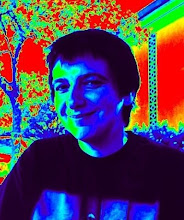White nights

Getting high on 24-hours bookstores and midnight visits to the battleship Aurora, while waiting for the first signs of dawn to appear inside the last glow of sunset - these are the white nights of Petersburg/Leningrad, where days alternate to sleepless nights, where the city rushes uninterruptedly like its rivers. If I could dream of a city while in this half-awake state I had been in for the past week, this would be it, the city on which the sun never sets, where music and culture flow, where I find all my earlier dreams mixed in a strange dissonant symphony. And if the raising of the bridges on the Neva remind you of a scene in an Eisenstein movie, and if the endless wandering though the rooms of the Hermitage dwarfs all the museums of the world combined, this is just part of the unreal city that rises from the waters and bathes in the endless light of day. And if good science sells in huge piles in the small and large bookstores down the Nevsky prospect and if the buildings of the Academy of Science look right upon the Winter Palace from across the water, this is the dream you've been dreaming for so long. And now you wonder if you are awake or in your sleep and day and night are all the same and sleep and wake become blurred in a state of euphoria that only this city knows. Everything is out of scale, from the twenty something kilometers I walk each day, to the overwhelming amount of information my eyes take in, the immense scale of the Hermitage, the scale of art and history, the wealth of books and knowledge. Books, lots of books, all I ever wanted to find, like a child transported in the magical land of toys. I come away from the white nights of Petersburg with much longing, a pile of new books hardly fitting in my backpack, and a sense of deep attachment to a city that breathes and lives like a pulse deep below its palaces and rivers, deep in time and space.

Petersburg/Leningrad is the prototypical example of the "liminal cities" I mentioned already once in relation to the Strugatskys' prose. Not just because of its existence between land and water, between darkness and light, between the West and the East, but also in its role of threshold in history between the old-new-old transitions, the opening and closing of giant doors separating scenarios of history. The city as threshold. My visit, almost exactly a year ago, to Istanbul/Byzantium had in many ways a very similar flavor: another beautiful "liminal city".

While shopping for scientific books in the many extremely well supplied bookstores up and down the Nevsky Prospect, I noticed a series of monographs by the URSS publisher on the theme of "Synergetics." The term refers broadly to that branch of nonlinear mathematics (or nonlinear physics) that deals with the modeling of complex systems. The titles in the series range from monographs on topics ranging from nanotechnology to more abstract mathematics like the geometric theory of differential equations, to a Russian translation of the old Gregory Bateson "Mind and Nature". I bought one title from the series, out of curiosity for this new Russian scientific fashion (I am a great fan of the old Russian cybernetic fashion, see my review of Slava Gerovitch's book on the history of Soviet cybernetics in my October 2006 posting). I wasn't much into books on "fractals and chaos" (too much overselling of that stuff for the consumption of the scientifically illiterate), but then I saw a neat looking book on nonlinear dynamics, which seemed like a good reading for the late (very late) nights of my Petersburg stay. The book is "Нелинейная динамика" by Малинецкий, Потапов, and Подлазов. The book is a very nice overview, concentrated in less than 300 pages, of a wide range of topics, written for mathematicians (and/or theoretical physicists), very clear and concise. The subjects covered range from order parameters, with a detailed analysis of the case of Ginzburg-Landau equations, to models of turbulence, to a nice chapters on mathematical models of neural networks, entropy, Lyapunov exponents, time series, nonlinear dynamics algorithms, criticality, cellular automata and examples of applications to very concrete models, from forest fires to biological evolution.
Well, I admit I read this book purely for entertainment. I bought a lot of other books on mathematics and physics, which are closer to my professional interests. I will come back to reviewing some of them when I have done some more reading.
For now I will just mention a different book I was very happy to find in Petersburg. It is a Russian translation of the very first novel by Stanislaw Lem, "The Magellanic Cloud", first published in 1955. Apparently, the book was only published in the original Polish and in a Russian translation. Lem later grew to dislike it and never sold the rights for any other translations. (I have had for quite some time already an almost complete collection of Lem's writings, both fiction and prose, in a range of various different languages, save for this hard to find piece. Got it!)

URSS science books online bookstore

